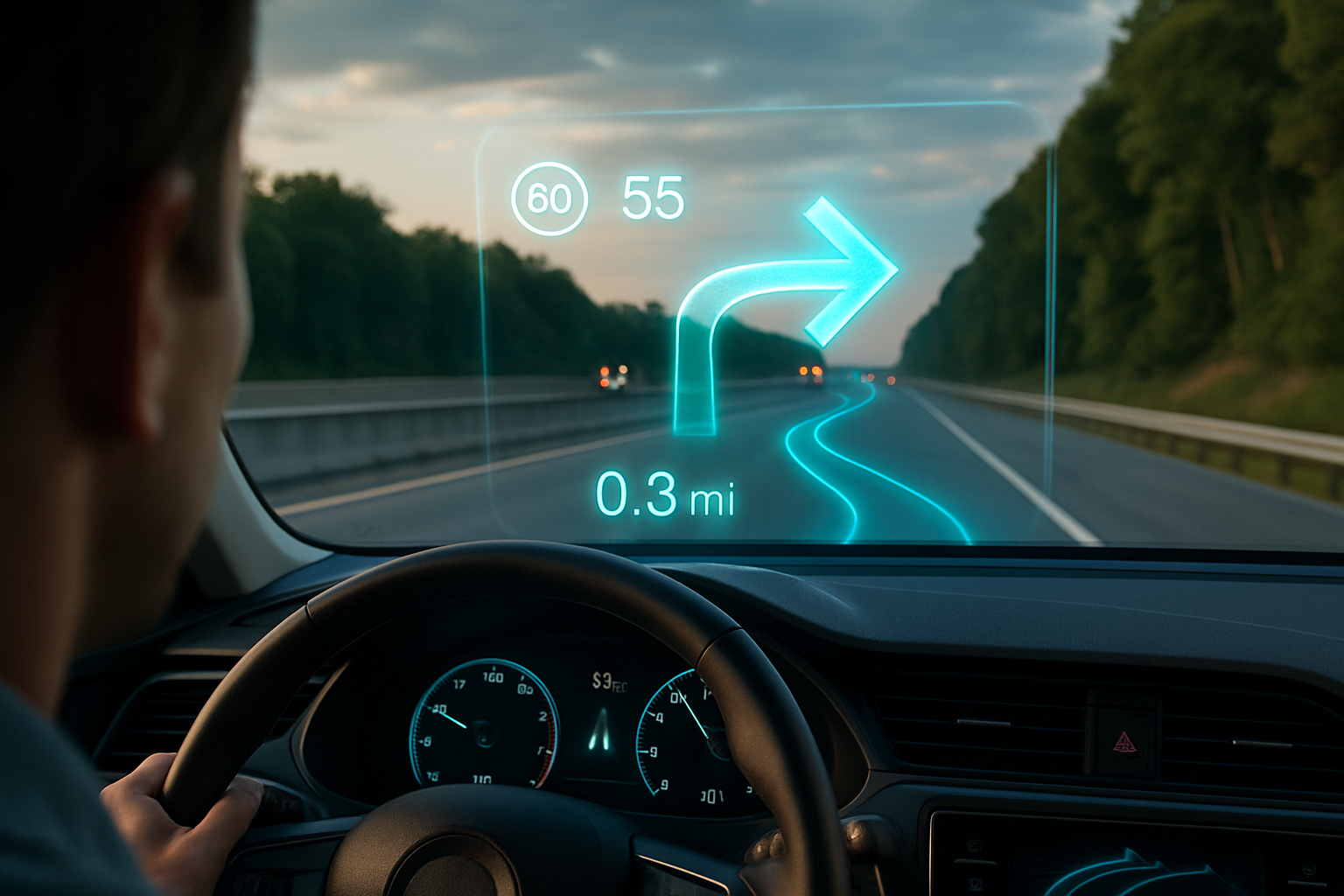Holographic Heads-Up Displays: The Future of Driver Information
Imagine cruising down the highway, your eyes never leaving the road ahead, yet all the information you need - from navigation directions to vehicle diagnostics - floats seemingly in mid-air before you. This isn't science fiction; it's the promise of holographic heads-up displays (HUDs), a technology poised to revolutionize how drivers interact with their vehicles. As automotive interfaces evolve, holographic HUDs stand at the forefront, offering an immersive, intuitive, and safer way to access crucial information while driving.

Understanding Holographic HUD Technology
Holographic HUDs take this concept to the next level, using advanced optics and light manipulation to create three-dimensional images that appear to float in space. Unlike traditional HUDs, which project a flat image onto the windshield, holographic systems create depth and dimensionality, allowing for more intuitive information presentation and interaction.
The Benefits of Holographic HUDs
One of the primary advantages of holographic HUDs is their ability to present more information without cluttering the driver’s view. By utilizing the three-dimensional space, these systems can layer data in a way that’s both comprehensive and easy to digest at a glance. This enhanced information presentation can significantly reduce the time drivers spend looking away from the road, potentially improving safety.
Challenges in Implementation
Despite their potential, holographic HUDs face several hurdles before widespread adoption. Technical challenges include perfecting the optics to work in various lighting conditions and ensuring the system’s reliability in the harsh automotive environment. There are also concerns about potential driver distraction, as more immersive displays could potentially draw too much attention from the road.
The Road Ahead for Holographic HUDs
As technology continues to advance, we can expect to see holographic HUDs become increasingly sophisticated. Future systems may incorporate augmented reality elements, overlaying navigation information directly onto the road ahead or highlighting potential hazards in real-time. The integration of gesture controls and eye-tracking technology could further enhance the user experience, allowing for intuitive interaction with the holographic interface.
Impact on Vehicle Design and Manufacturing
The adoption of holographic HUDs is likely to have far-reaching effects on vehicle design and manufacturing processes. Interior layouts may need to be reimagined to accommodate the new technology, while windshields will require specialized coatings or embedded elements to serve as projection surfaces. This shift could lead to new partnerships between automakers and tech companies, driving innovation in both sectors.
Regulatory Considerations
As with any new automotive technology, holographic HUDs will need to navigate a complex regulatory landscape. Safety standards will need to be developed to ensure these systems enhance rather than hinder driver awareness. Privacy concerns may also arise, particularly if these systems are capable of collecting and processing large amounts of data about driver behavior and preferences.
The Potential for Personalization
One exciting aspect of holographic HUDs is their potential for personalization. Drivers could customize their displays to show the information most relevant to them, whether that’s performance data for enthusiasts or efficiency metrics for the eco-conscious. This level of customization could enhance the overall driving experience and create deeper connections between drivers and their vehicles.
Holographic HUDs and the Future of Mobility
Looking further ahead, holographic HUDs could play a crucial role in the transition to more advanced forms of mobility. In semi-autonomous vehicles, these displays could provide drivers with a clear understanding of the vehicle’s capabilities and limitations, facilitating smoother handoffs between human and machine control. As we move towards fully autonomous vehicles, holographic displays could transform from driver information systems to entertainment and productivity hubs for passengers.
In conclusion, holographic heads-up displays represent a significant leap forward in automotive interface design. By providing drivers with more intuitive and comprehensive information without compromising safety, these systems have the potential to transform the driving experience. As technology continues to evolve, we can expect holographic HUDs to become an increasingly common and important feature in vehicles of the future, paving the way for safer, more connected, and more enjoyable journeys on the road ahead.





